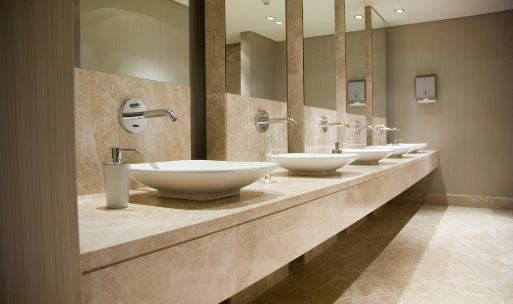The Role of Pressure Sensor in Smart Irrigation Systems
Smart irrigation is transforming the agricultural and landscaping industries by using modern technology to optimize water usage, improve crop yields, and reduce operational costs. A critical factor in the effectiveness of these systems is the precise control and management of water pressure. Understanding the role of pressure in smart irrigation is essential for ensuring that these systems function efficiently and sustainably. In this article, we will explore the importance of pressure in smart irrigation, its impact on water distribution, and the technologies that help monitor and regulate pressure to achieve optimal irrigation performance.
Introduction to Smart Irrigation Systems
Smart irrigation systems are automated, technology-driven solutions designed to optimize water use based on real-time data from various sources such as weather forecasts, soil moisture levels, and plant water requirements. These systems are capable of automatically adjusting water schedules and volumes, reducing waste and promoting sustainable agricultural practices.
Traditional irrigation systems rely on manual operation and fixed schedules, often leading to over- or under-watering. In contrast, smart irrigation systems utilize sensors, controllers, and weather-based algorithms to deliver the right amount of water at the right time. One key aspect that determines the effectiveness of water delivery is pressure control.
Why Pressure Matters in Smart Irrigation
Pressure plays a critical role in irrigation systems because it directly affects the uniformity and efficiency of water distribution. Proper water pressure ensures that water is evenly distributed across the field or landscape, reaching every part of the irrigation zone. Inadequate or excessive pressure can result in inefficient water use, reduced crop yields, and even damage to the irrigation system.
1. Uniform Water Distribution
One of the primary goals of any irrigation system is to distribute water evenly across the target area. Water pressure is a key factor in achieving this uniformity. If the pressure is too low, sprinklers and drip emitters may not provide sufficient coverage, leaving some areas dry. On the other hand, if the pressure is too high, water may be applied too quickly, causing runoff, soil erosion, or plant damage.
In smart irrigation systems, maintaining the correct pressure ensures that water is delivered uniformly, which helps promote healthy plant growth and reduces the risk of over- or under-watering. This uniform distribution also minimizes water waste and improves the overall efficiency of the system.
2. Preventing Water Waste
Water scarcity is a growing concern worldwide, and efficient water use is becoming increasingly important, particularly in agriculture. High water pressure can lead to excessive water flow rates, which in turn can result in water wastage due to overspray, runoff, or misting. Conversely, low water pressure can cause poor coverage, leading to uneven watering and requiring longer irrigation times to achieve adequate soil moisture levels.
Smart irrigation systems equipped with pressure sensors and regulators can monitor and adjust pressure levels to prevent water waste. By ensuring that water is delivered at the optimal pressure, these systems help conserve water resources and reduce overall consumption.
3. Enhancing Irrigation System Longevity
Excessive pressure can cause damage to irrigation components such as pipes, valves, and sprinkler heads. Over time, this can lead to costly repairs or the need for system replacements. On the other hand, low pressure can strain pumps and other equipment, potentially causing system malfunctions or inefficiencies.
Maintaining the right pressure level is essential for prolonging the life of the irrigation system. Smart irrigation systems that incorporate pressure management features can protect equipment from damage, reduce maintenance costs, and ensure that the system operates smoothly for years to come.
Technologies for Pressure Control in Smart Irrigation
Several technologies are used to monitor, regulate, and control pressure in smart irrigation systems. These technologies work together to optimize water delivery and improve the overall performance of the system.
1. Pressure Sensors
Pressure sensors are essential components of smart irrigation systems. These sensors continuously monitor the pressure of water flowing through the system and provide real-time data to the control unit. Pressure sensors can detect fluctuations in pressure, enabling the system to make immediate adjustments to maintain optimal levels.
In smart irrigation, pressure sensors are often integrated with other types of sensors, such as flow sensors and soil moisture sensors, to create a comprehensive water management system. This integration allows the system to respond to changing conditions, such as variations in water demand or environmental factors, ensuring efficient water use.
2. Pressure Regulators
Pressure regulators are devices that maintain a consistent water pressure throughout the irrigation system. They are particularly important in areas where water pressure can fluctuate due to changes in supply or elevation. Pressure regulators ensure that the water pressure remains within the optimal range, preventing damage to the system and ensuring uniform water distribution.
In smart irrigation systems, pressure regulators can be adjusted automatically based on sensor data. For example, if the pressure sensor detects a drop in pressure, the control unit can signal the pressure regulator to increase the pressure to the desired level. This dynamic adjustment capability ensures that the system continues to operate efficiently, even under changing conditions.
3. Smart Controllers
Smart controllers are the brains of a smart irrigation system. These devices use data from sensors, including pressure sensors, to automatically adjust watering schedules, durations, and pressure settings. Smart controllers can also connect to weather data and forecast systems, allowing them to preemptively adjust irrigation based on expected rainfall, temperature changes, and other environmental factors.
Many smart controllers come with built-in pressure monitoring features that enable users to set desired pressure ranges. If the system detects that the pressure is outside the specified range, the controller can take corrective action, such as adjusting the flow rate or activating pressure-regulating devices.
4. Flow Sensors
Flow sensors measure the rate of water flow through the irrigation system and can help detect leaks, blockages, or pressure drops that might indicate a problem. When paired with pressure sensors, flow sensors provide a more complete picture of system performance, allowing for early detection of issues that could lead to inefficiencies or equipment damage.
For instance, if the flow sensor detects an unusually low flow rate but the pressure sensor indicates high pressure, this could suggest a blockage in the system. The smart controller can then alert the user or take corrective action to resolve the issue.
Applications of Pressure Control in Different Irrigation Methods
Different types of irrigation systems require specific pressure levels to operate effectively. Below are some common irrigation methods and how pressure control is applied to each.
1. Drip Irrigation
Drip irrigation is one of the most water-efficient methods of irrigation, delivering water directly to the root zone of plants. This method requires low pressure to ensure that water is delivered slowly and consistently. High pressure in a drip irrigation system can cause emitters to release water too quickly, leading to runoff and water waste.
Pressure regulation is crucial in drip irrigation systems to ensure that the correct pressure is maintained. Smart drip irrigation systems can adjust pressure dynamically based on real-time data, ensuring that water is applied uniformly across the entire system.
2. Sprinkler Irrigation
Sprinkler irrigation systems distribute water over a large area using pressurized water that is sprayed from nozzles. These systems require moderate to high pressure to ensure even water distribution and adequate coverage. If the pressure is too low, the water may not reach all areas, resulting in dry spots. If the pressure is too high, it can cause misting or overspray, leading to water waste.
In smart sprinkler systems, pressure sensors and regulators are used to maintain optimal pressure levels. The system can adjust pressure automatically based on factors such as wind speed, soil moisture, and water demand, ensuring efficient and even watering.
3. Micro-Spray Irrigation
Micro-spray irrigation is a variation of sprinkler irrigation that uses low-pressure emitters to deliver water in a fine spray. This method is often used in horticulture and landscaping for precise watering of plants. Like drip irrigation, micro-spray systems require low pressure to function effectively. Pressure control in these systems is essential to prevent overwatering or damage to delicate plants.
Smart micro-spray irrigation systems can use pressure sensors to monitor water flow and adjust pressure in real-time, ensuring that water is applied at the correct rate and volume.
Benefits of Pressure Management in Smart Irrigation Systems
Proper pressure management in smart irrigation systems offers numerous benefits that contribute to both water conservation and system performance.
1. Water Conservation
By maintaining optimal pressure levels, smart irrigation systems prevent water waste caused by overpressure or low-pressure inefficiencies. Pressure management ensures that water is applied evenly and at the right rate, reducing runoff and evaporation. This leads to significant water savings, especially in regions where water resources are scarce.
2. Improved Plant Health
Uniform water distribution ensures that all plants receive the same amount of water, promoting healthy growth and reducing the risk of overwatering or underwatering. By delivering water precisely where it is needed, smart irrigation systems help create optimal growing conditions for crops, gardens, and landscapes.
3. Cost Savings
Efficient water use leads to lower water bills and reduced energy costs, especially in large-scale agricultural operations. Pressure management also reduces wear and tear on irrigation equipment, minimizing the need for repairs and extending the lifespan of the system. These cost savings can be significant over time, making smart irrigation an attractive investment.
4. Environmental Sustainability
Smart irrigation systems that incorporate pressure management help reduce the environmental impact of water use in agriculture and landscaping. By conserving water and reducing runoff, these systems help protect local ecosystems and reduce the demand on freshwater resources.
Winsen Pressure Sensors Solution
https://www.winsen-sensor.com/selection-guide/winsen-pressure-sensors-solutions.htmlConclusion
Pressure control is a critical factor in the success of smart irrigation systems. By ensuring that water is delivered at the correct pressure, these systems can optimize water distribution, conserve resources, and improve plant health. Technologies such as pressure sensors, regulators, and smart controllers play a vital role in maintaining the right pressure levels and enhancing the overall performance of the irrigation system.
As water scarcity continues to be a global challenge, the adoption of smart irrigation systems with advanced pressure management capabilities will become increasingly important. These systems offer a sustainable solution for efficient water use in agriculture, landscaping, and horticulture, helping to create a greener and more water-conscious future.










